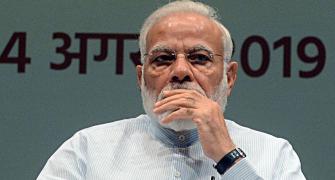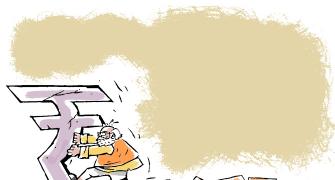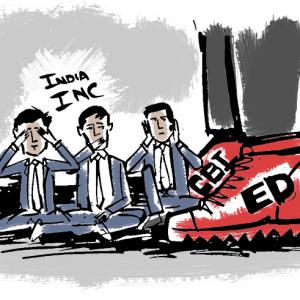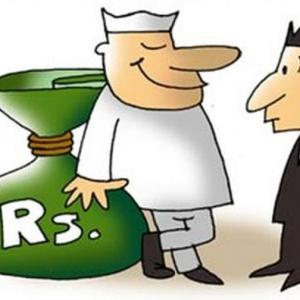'If more than 60 commissioner-level tax officials were compulsorily retired in the span of a few months, surely the malaise is far deeper,' notes A K Bhattacharya.
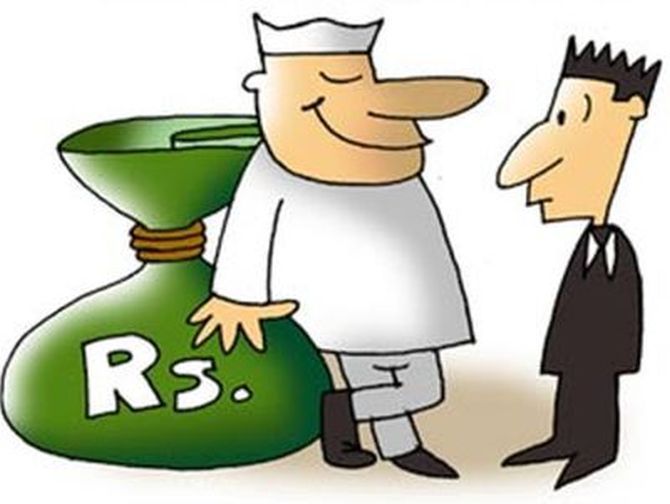
Recently, the government retired 15 senior tax officials from service.
The number of senior tax officials, compulsorily retired in this manner, has now crossed 60.
The decision on compulsory retirement has been taken under the provisions of Fundamental Rule (FR) 56-J that regulates the service conditions of government officers belonging to Group A, B and C.
What does FR 56-J say? It empowers the government to compulsorily retire any government servant after either giving three months's notice or paying her/him three months of pay and allowances, subject to three conditions.
One, a decision on compulsory retirement can be taken if the government is of the opinion that it is in public interest.
Two, if the officer belongs to Group A or B service, then s/he can be retired after s/he attains the age of 50 years, provided s/he entered service before attaining the age of 35 years.
And three, the compulsory retirement for all other groups of services can be ordered only after the government servant attains the age of 55 years.
Note that the provisions under FR 56-J have been part of the government's service rules for several decades, but it has been used quite frequently only now.
Indeed, a quick search of all the circulars issued by the department of personnel and training on premature retirement shows that from 1989 to 2014 -- almost 25 years -- the government did not consider it necessary to issue any notification to clarify the provisions under FR 56-J.
There are about a dozen circulars issued between 1969 and 1989 to clarify the implications of a few Supreme Court judgments on the applicability of this provision.
But since 2014, the government has issued as many as nine clarificatory circulars.
Equally important to note here is that the circular in 2014 was issued in March, a couple of months before Narendra D Modi was sworn in as prime minister in May that year.
The March 2014 circular is very significant also because it explained the two specific situations under which decisions on compulsory retirement could be taken.
This circular stated that a review of the performance of the officers concerned should be undertaken at least six months before s/he attains the age of 50 or 55 years.
It also reiterated that the government could compulsorily retire those officers under FR 56-J, whose integrity was doubtful or whose fitness or competence had not been up to the mark.
In the last five years, the Modi government has issued many circulars to set up committees and review the manner in which recommendations for compulsory retirement of officers could be implemented.
However, action on the ground has been seen only in the last few months and so far this has been largely limited to the income-tax department of the Union finance ministry.
It would, therefore, appear that the drive on compulsory retirement is essentially aimed at addressing the general concerns over complaints of harassment by dishonest tax officials.
This does not seem to be part of an overall policy decision to get rid of all those officials in different departments of the government, whose fitness or integrity is a question mark.
A more relevant issue with regard to retiring tax officials is that the measure to clean up the taxation department cannot achieve the desired goals with just compulsory retirements.
Compulsory retirement of tax officials with integrity issues would only address some of the immediate concerns.
What about the systemic issues that create incentives for a tax official to become dishonest and harass a tax payer?
It is time the government embarked on a more comprehensive strategy to make the tax department friendlier.
Increasing the digital interface is certainly one of the ways.
But a more fundamental and effective measure would be to create a Chinese wall between those officers who undertake investigations and those who are responsible for tax collections.
The investigation wing of the tax department should function on its own and not be subservient to the revenue collection goals of the government.
The current separation of responsibilities clearly has not yielded the desired results.
If more than 60 commissioner-level tax officials were compulsorily retired in the span of a few months, surely the malaise is far deeper and requires a more fundamental organisational restructuring of the revenue department.
Perhaps, the investigation wing should be taken out of the revenue department and made part of another department in the finance ministry.



